-
Sale!
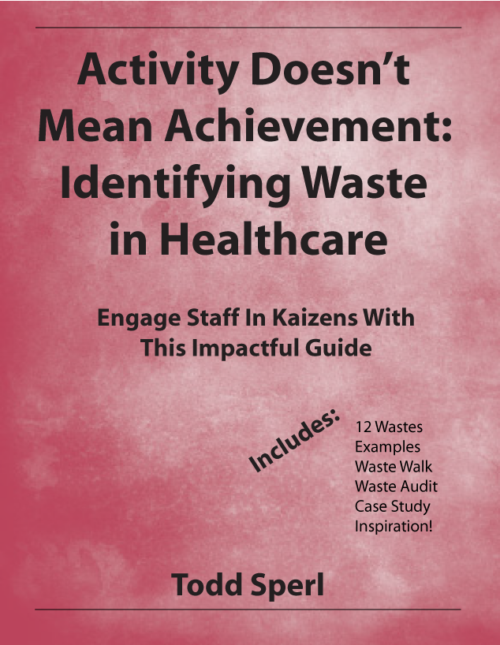
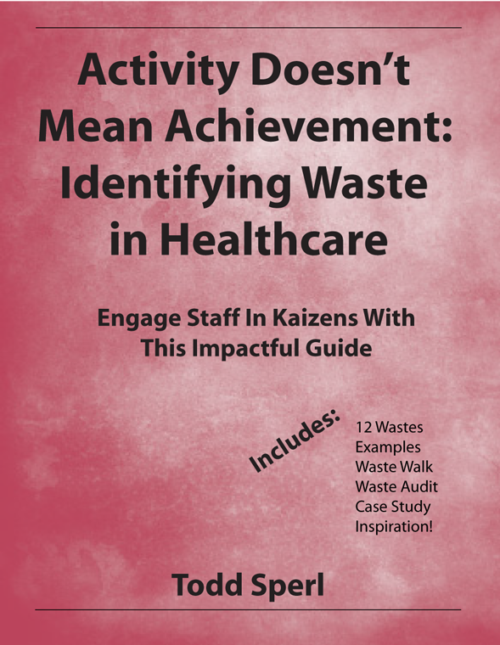 By: Todd Sperl Activity Doesn’t Mean Achievement: Identifying Waste in Healthcare provides a practical approach to educate and communicate to healthcare staff on the various types of wastes that may exist in their processes as well as provide guidance in possible ways to eliminate those wastes. Subsequently, individuals and teams can work to eliminate those specific wastes through Kaizen or Rapid Improvement Events. The purpose of this book is to provide:
By: Todd Sperl Activity Doesn’t Mean Achievement: Identifying Waste in Healthcare provides a practical approach to educate and communicate to healthcare staff on the various types of wastes that may exist in their processes as well as provide guidance in possible ways to eliminate those wastes. Subsequently, individuals and teams can work to eliminate those specific wastes through Kaizen or Rapid Improvement Events. The purpose of this book is to provide:- A standard communication platform for defining the 12 wastes for an individual as well as a team
- EXAMPLES of healthcare waste that may “trigger” ideas of wasteful processes in your facility
- Questions to help DETECT wastes in current processes
- Suggestions of Lean and Six Sigma methods to ELIMINATE wastes
- Innovative ways to conduct a Waste Walk
- An example of a Waste Audit and Waste Walk
- Space in the book to document current wasteful processes as well as ideas for eliminating those wastes
- Definitions for the basic Lean and Six Sigma tools
- A case study on how one facility used the simple concept of waste to engage staff in their Lean journey
-
Sale!
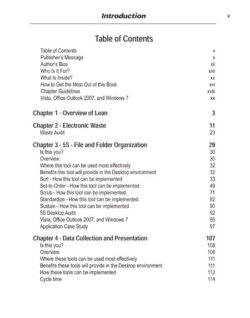
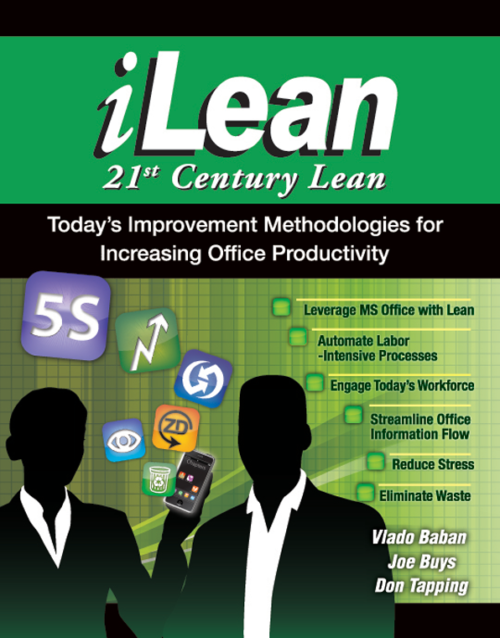 By: Vlado Baban, Joe Buys, and Don Tapping
By: Vlado Baban, Joe Buys, and Don Tapping
iLean's content will provide actual case studies, application examples, and working macros that have proven successful in improving information flow in all types of environments. iLean was arranged in a format that should provide you with enough detailed guidance (step-by-step instructions) to apply a similar-type Lean practice to your work process. Starting with Chapter 3, each chapter begins with a section titled Is this you? which was specifically designed to assist you in determining if that chapter has immediate relevancy to your current work challenges. Subsequently, it is suggested that a formal standard improvement methodology, Six Sigma's Design-Measure-Analyze-Improve-Control (D-M-A-I-C), Edward Deming's Plan-Do-Check-Act (PDCA) or some other similar methodology be used if a formal structure is required and/or more statistical analysis needs is required. However, many of the concepts and tools presented throughout this book can be implemented by an individual worker and, therefore, will not require a formal process (other than good project management skills). Microsoft s Office suite of products of Word, Excel, and Outlook, as well as Open Source applications of vTiger, Google Docs, and Huddle, are referenced throughout this book to provide an overall understanding of how Lean can be used to move information faster and more accurately than ever before. In doing so, you will be able to reduce inter-office dependencies, delays, and errors that may be present in your current business processes. -
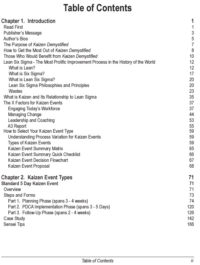
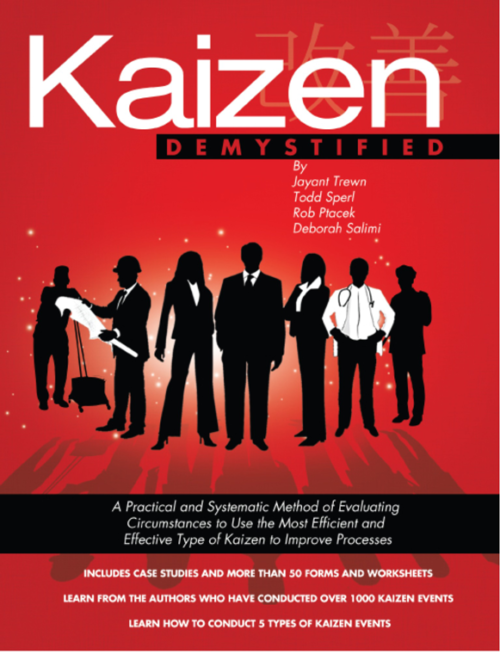 By: Jayant Twewn (PhD), Todd Sperl, Rob Ptacek, and Deborah Salimi (PhD)
By: Jayant Twewn (PhD), Todd Sperl, Rob Ptacek, and Deborah Salimi (PhD)
We are pleased to present Kaizen Demystified, perfectly timed for today s ever-changing and ever-demanding business environment requiring improved processes. Whether your industry is manufacturing, healthcare, financial, education, armed forces, services, government, or the construction industry, or, you are a manager, supervisor, team leader, or a front-line worker, this book will provide new insights and ideas for managing and facilitating continuous improvement and problem solving projects (i.e., Kaizen Events). Kaizen Demystified provides a simple and practical approach detailing five distinct methods on how Lean (and Six Sigma) tools and concepts can quickly and efficiently be applied and managed to solve business problems and improve processes. The five types of Kaizen Events detailed in this book are the: (1) Standard 5 Day Kaizen Event, also referred to as a Kaizen Blitz or Rapid Improvement Event, (2) Rolling Kaizen Event, (3) Web Based Kaizen Event, (4) Today's Kaizen Event, and (5) Wiki (or Quick) Kaizen Event. Each type will be thoroughly explained to demystify what it may mean for you. Kaizen Event Leadership is thoroughly explored in a separate chapter/section that relates to all types of Kaizen Events. It provides a listing of the common issues facing the leader of a Kaizen Event as well as suggested how-to leadership skills to address those issues. This is one of the most important aspects of leading any type of Kaizen Event. -
Sale!
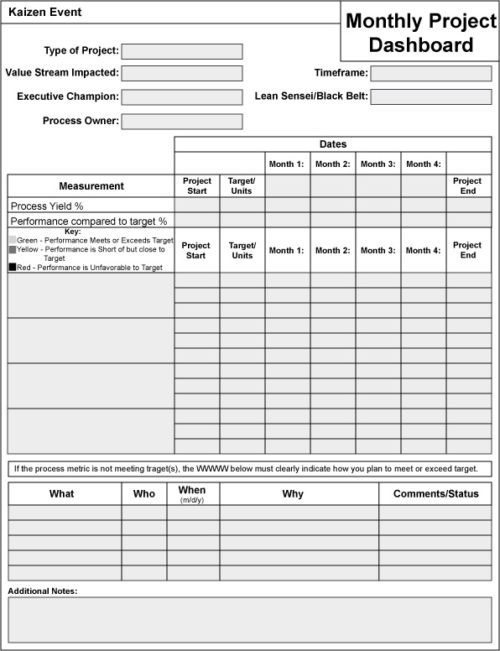
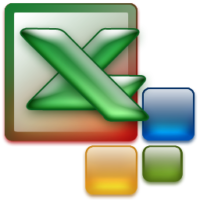 The Kaizen Demystified Worksheets allow you to customize the tools, concepts, practices, and worksheets demonstrated in the Kaizen Demystified book. These 46 electronic worksheets will allow for an effective and efficient application of engaging people in a Kaizen Event. Delivered as customizable Excel worksheets.
The Kaizen Demystified Worksheets allow you to customize the tools, concepts, practices, and worksheets demonstrated in the Kaizen Demystified book. These 46 electronic worksheets will allow for an effective and efficient application of engaging people in a Kaizen Event. Delivered as customizable Excel worksheets. -
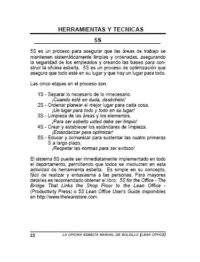
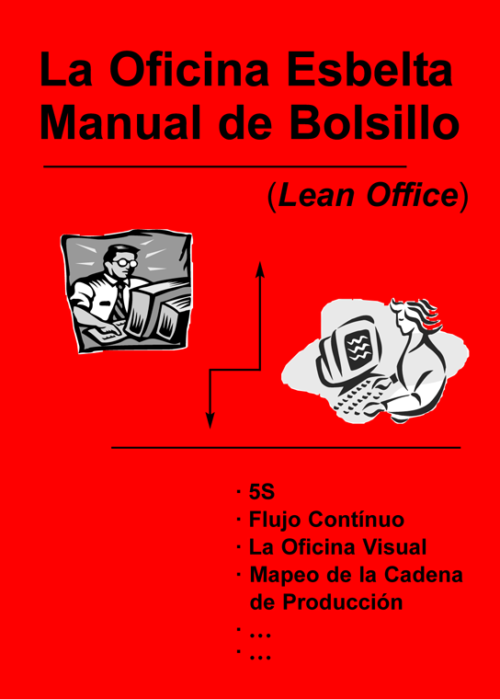 By: Luz Planco Cuando implemente la oficina esbelta, debe tener en cuenta que la implementaci n es una traves a cuando piense que ha llegado al final descubrir que habr n mucho m s "optimizaciones cont nuas" y cuando piense que alcanz la meta a n quedar n m s optimizaciones cont nuas por realizar. La meta final esbelta es la creaci n de una cultura de optimizaci n cont nua de cada d a, en todos los productos y servicios, por todo el personal. Una vez que usted tenga esto establecido, las herramientas esbeltas emerger n como palabras diarias, tales como 5S, kaizen y kanban.
By: Luz Planco Cuando implemente la oficina esbelta, debe tener en cuenta que la implementaci n es una traves a cuando piense que ha llegado al final descubrir que habr n mucho m s "optimizaciones cont nuas" y cuando piense que alcanz la meta a n quedar n m s optimizaciones cont nuas por realizar. La meta final esbelta es la creaci n de una cultura de optimizaci n cont nua de cada d a, en todos los productos y servicios, por todo el personal. Una vez que usted tenga esto establecido, las herramientas esbeltas emerger n como palabras diarias, tales como 5S, kaizen y kanban. -
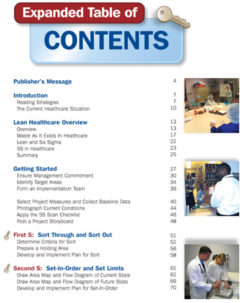
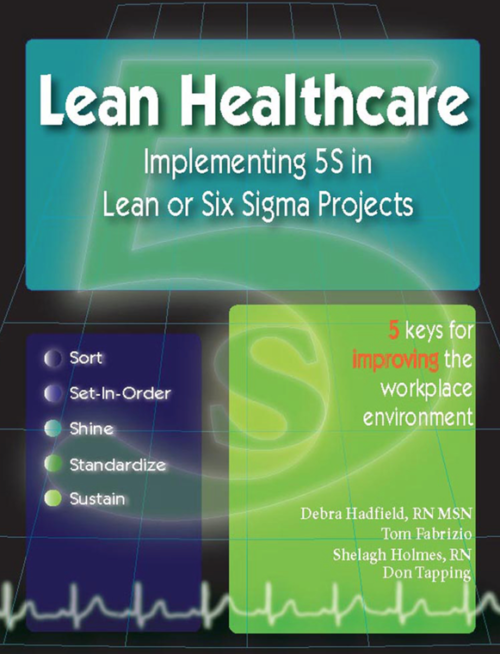 By: Debra Hadfield (RN, BSN, MSN), Shelagh Holmes (RN), Tom Fabrizio, Roger Kremer, and Don Tapping
By: Debra Hadfield (RN, BSN, MSN), Shelagh Holmes (RN), Tom Fabrizio, Roger Kremer, and Don Tapping
Note: A Dropbox file link will be provided after purchase and the PDF can be used throughout your organization at no additional charge! This book is the first in the industry to offer real solutions and practical advice for improving patient and non-patient care processes, as well as reducing costs. Included in the book are over 20 forms, worksheets, and guidelines for you to use as a workbook as you implement your 5S portion of a Lean or Six Sigma project. Key learning features of this workbook include: 40+ digital photos demonstrating Lean and 5S projects, identification of who should be doing what part of the 5S activity, detailed procedures ensuring each 5S step is done thoroughly, started tips providing valuable insight from Lean Sensei, and quotes from various leaders throughout the world. -
Sale!
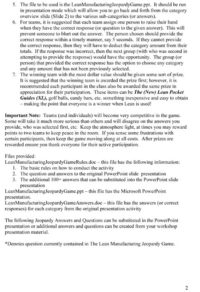
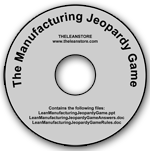 The Lean Manufacturing Jeopardy Game is a highly-engaging game to reinforce Lean concepts presented throughout a training session or workshop. This activity is typically conducted at the end of a training session. Lean Jeopardy allows for the group to be energized with the information that had been presented, while at the same time having fun in a competitive manner. The Lean Manufacturing Jeopardy Game has four categories, What is it?, Why use it?, Where use it?, and Picture this? with 5 answers for each category. There is also an additional 100 answers provided in a Microsoft Word file from which you can cut and paste into the PowerPoint file for newer versions as you see fit. The new questions are referenced from The New Lean Pocket Guide (XL).
The Lean Manufacturing Jeopardy Game is a highly-engaging game to reinforce Lean concepts presented throughout a training session or workshop. This activity is typically conducted at the end of a training session. Lean Jeopardy allows for the group to be energized with the information that had been presented, while at the same time having fun in a competitive manner. The Lean Manufacturing Jeopardy Game has four categories, What is it?, Why use it?, Where use it?, and Picture this? with 5 answers for each category. There is also an additional 100 answers provided in a Microsoft Word file from which you can cut and paste into the PowerPoint file for newer versions as you see fit. The new questions are referenced from The New Lean Pocket Guide (XL). -

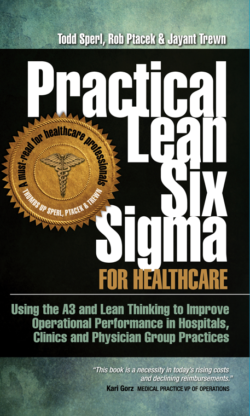 By: Todd Sperl, Rob Ptacek, Jayant Trewn (PhD)
By: Todd Sperl, Rob Ptacek, Jayant Trewn (PhD)
NOTE: This book in on backorder. Orders placed today will ship Monday, September 4th, 2023. We will upgrade the shipping at no additional cost. This book bridges the gap between a highly quantitative analysis of a process that requires extensive training (i.e., Six Sigma certification) and a more simplified approach that can be used and understood by the masses (i.e., Lean thinking). The goal of this book is to make the methods and tools of Lean and Six Sigma accessible to more people and provide a common sense or “practical” approach to problem solving and continuous improvement. This book is intended to be used by Sigma Belt Levels, Lean Senseis (i.e., teachers), Continuous Improvement Specialists, front-line managers, and supervisors of departments and work groups, and improvement team members in their efforts to improve the patient care experience while reducing waste and variation in all types of healthcare processes. The Lean Six Sigma tools and concepts are presented relative to the A3 road map to provide a definitive how-to guide to problem solving and continuous improvement (Kaizen) initiatives. -
Sale!
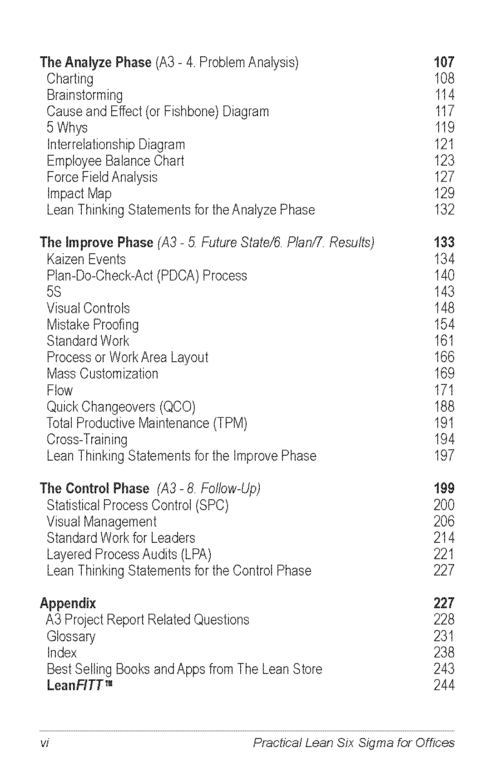
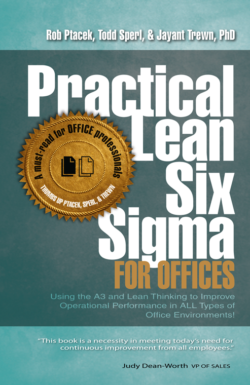 By: Rob Ptacek, Todd Sperl, Jayant Trewn, PhD This book bridges the gap between a highly quantitative analysis of a process that requires extensive training (i.e., Six Sigma certification) and a more simplified approach that can be used and understood by the masses (i.e., Lean thinking). The goal of this book is to make the methods and tools of Lean and Six Sigma accessible to more people and provide a common sense or “practical” approach to problem solving and continuous improvement. This book is intended to be used by Sigma Belt Levels, Lean Senseis (i.e., teachers), Continuous Improvement Specialists, front-line managers, and supervisors of departments and work groups, and improvement team members in their efforts to improve all types of administrative processes while reducing waste and variations, and engaging employees. The Lean Six Sigma tools and concepts are presented relative to the A3 road map to provide a definitive how-to guide to problem solving and continuous improvement (Kaizen) initiatives.
By: Rob Ptacek, Todd Sperl, Jayant Trewn, PhD This book bridges the gap between a highly quantitative analysis of a process that requires extensive training (i.e., Six Sigma certification) and a more simplified approach that can be used and understood by the masses (i.e., Lean thinking). The goal of this book is to make the methods and tools of Lean and Six Sigma accessible to more people and provide a common sense or “practical” approach to problem solving and continuous improvement. This book is intended to be used by Sigma Belt Levels, Lean Senseis (i.e., teachers), Continuous Improvement Specialists, front-line managers, and supervisors of departments and work groups, and improvement team members in their efforts to improve all types of administrative processes while reducing waste and variations, and engaging employees. The Lean Six Sigma tools and concepts are presented relative to the A3 road map to provide a definitive how-to guide to problem solving and continuous improvement (Kaizen) initiatives. -
Sale!
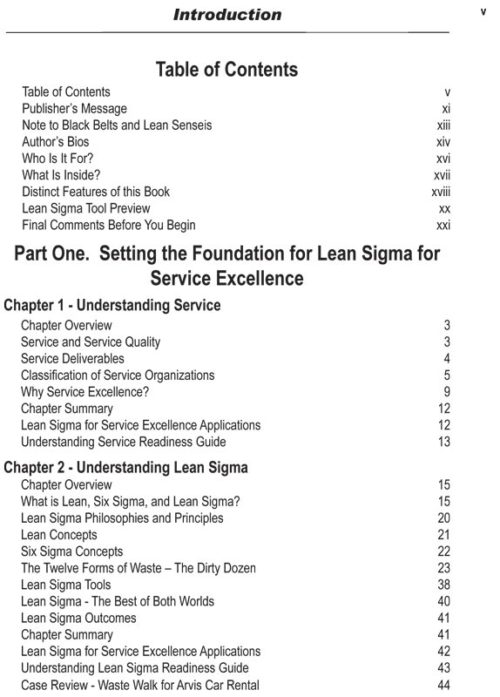
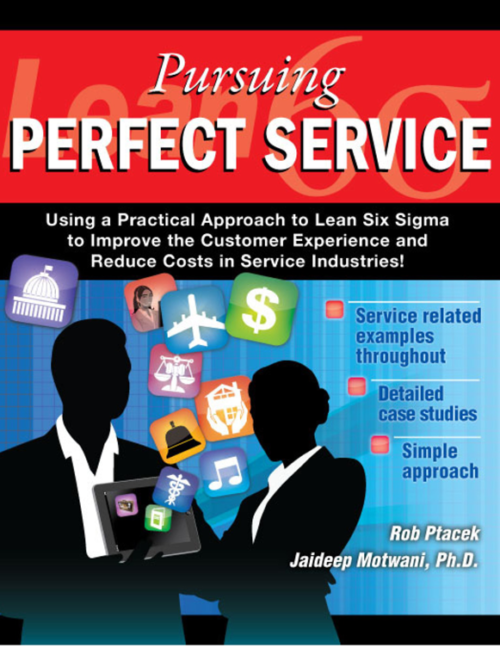 By: Rob Ptacek and Jaideep Motwani (Ph.D)
By: Rob Ptacek and Jaideep Motwani (Ph.D)
Note: Currently out of stock. Orders placed today will ship within 2 weeks! Pursuing Perfect Service is a comprehensive and detailed set of instructions on how to implement Lean and Six Sigma tools and concepts in a variety of environments. It will provide the solid foundation upon which Lean Sigma tools can be applied in any service organization. Service providers are continually processing daily requests and must know how to identify client needs and expectations, how to best satisfy their needs, and how to do it at the lowest possible cost. This book is a step-by-step implementation guide for continuous improvement while creating a solid foundation upon which to build a service excellence culture. Pursuing Perfect Service also provides insights and examples on how Information Technology can be used to improve data and information flow to enhance the overall client experience, while ensuring organizational profitability. -
Sale!
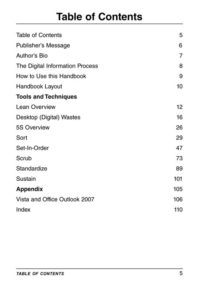
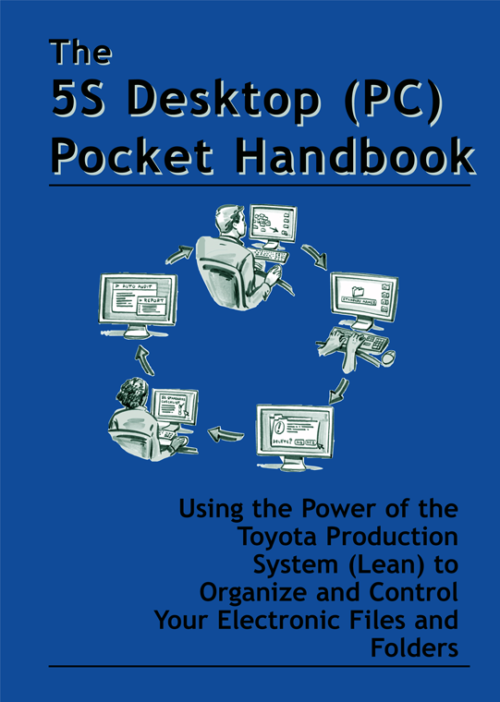 By: Vlado Baban
By: Vlado Baban
The 5S Desktop (PC) Pocket Handbook is a step-by-step guide for the implementation of 5S to all your electronic files. The XP version of Windows Explorer and the Office 2003 software suite were the versions used in creating this handbook. This handbook is designed to be:- An implementation guide. This handbook steps you through each phase of the 5S process. Examples are shown to assist you in this process. No two file systems (Desktops) are the same; therefore, use the examples as a guide when you apply that phase or step to your Desktop.
- A Lean beginning. 5S is a fundamental Lean tool and is considered the foundation for additional Lean tool application. Once 5S has been implemented and results have been obtained, there will be a need to integrate more Lean tools into your Desktop environment.
- A spark for the department. Once everyone understands the basic premise of Lean and 5S, then that understanding can serve as a catalyst for a more comprehensive application of Lean tools. (iLean and Lean Office Demystified II are available books on how additional Lean tools can be applied to your Desktop environment.)
- A bridge for improved performance. It is often stated that the average person at work today has nearly 80 emails to deal with on a daily basis. This, along with the other application files, can at times be overwhelming for the individual. Using 5S for organizing your emails, as well as the other application files, will greatly assist in managing this barrage of information. Implementing 5S to your files and folders will allow for a more stress-free workplace.
-
Sale!
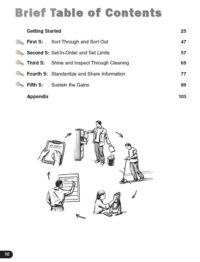
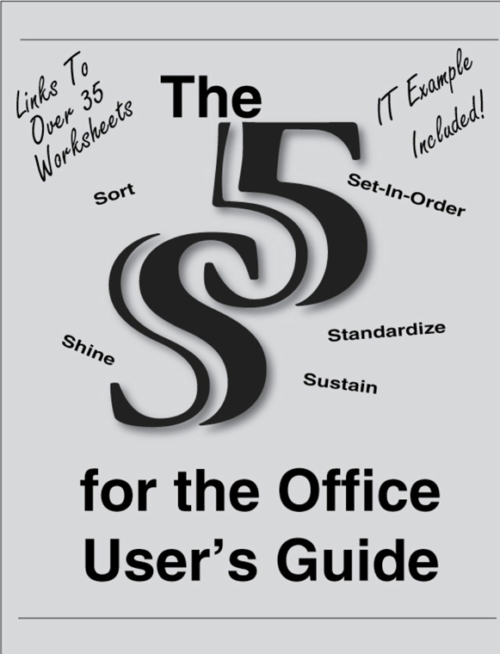 The 5S for the Office User's Guide provides an organization with the forms, worksheets, and checklists necessary to ensure a 5S project is well-planned from the start - as well as ensuring the program is sustained over time. This how-to guide should be used as it is titled - as a "Guide". The information contained in this workbook should supplement, support, and enhance, etc. current materials that an organization may currently be using. Throughout The 5S for the Office User’s Guide there will be various quotations, performance points, references to PC file storage (the IT case study in the appendix) etc. to further invoke the overall need to do 5S in all types of administrative settings. As organizations automate more administrative functions (i.e., becoming more paperless) then there must exist that same type of organization and standardization for a physical file system as well as the computer file system. It is the focus of this User’s Guide to have the 5S principles apply to both the physical desktop (paperwork, desk layout, drawer organization, etc.) and the PC desktop (folders, files, emails, shortcuts, etc.). No workbook or guide can take the place of a person’s enthusiasm and passion to improve. However, what this guide can do is provide a good, solid foundation on what is required to effectively implement 5S in administrative settings while also spearheading efforts to bring those principles to the PC.
The 5S for the Office User's Guide provides an organization with the forms, worksheets, and checklists necessary to ensure a 5S project is well-planned from the start - as well as ensuring the program is sustained over time. This how-to guide should be used as it is titled - as a "Guide". The information contained in this workbook should supplement, support, and enhance, etc. current materials that an organization may currently be using. Throughout The 5S for the Office User’s Guide there will be various quotations, performance points, references to PC file storage (the IT case study in the appendix) etc. to further invoke the overall need to do 5S in all types of administrative settings. As organizations automate more administrative functions (i.e., becoming more paperless) then there must exist that same type of organization and standardization for a physical file system as well as the computer file system. It is the focus of this User’s Guide to have the 5S principles apply to both the physical desktop (paperwork, desk layout, drawer organization, etc.) and the PC desktop (folders, files, emails, shortcuts, etc.). No workbook or guide can take the place of a person’s enthusiasm and passion to improve. However, what this guide can do is provide a good, solid foundation on what is required to effectively implement 5S in administrative settings while also spearheading efforts to bring those principles to the PC. -
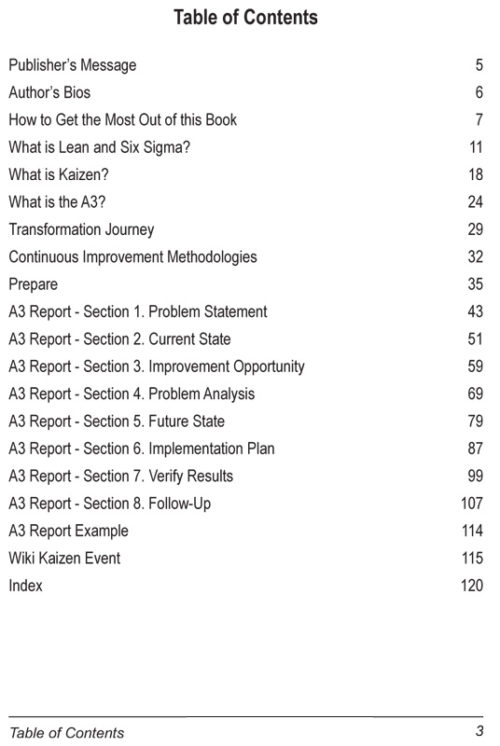
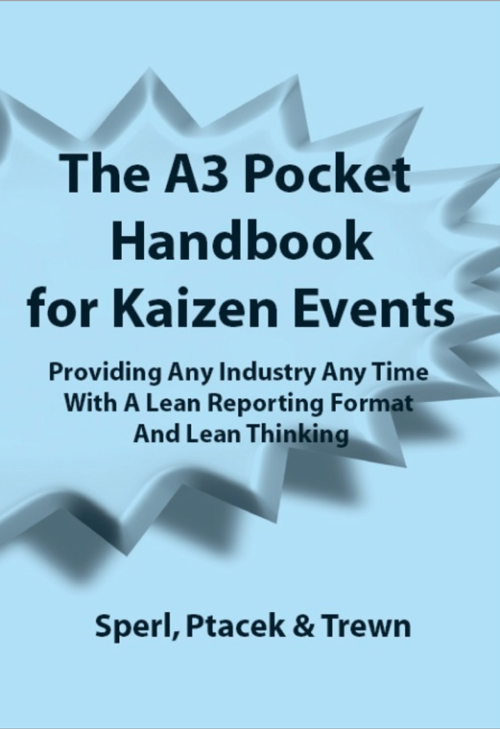 By: Todd Sperl, Rob Ptacek, Jayant Trewn (PhD)The A3 Pocket Handbook for Kaizen Events allows team members to be literally and figuratively on the same page when participating in an improvement event. This allows more ownership, while at the same time preserving organizational knowledge. The improvement methodology used (i.e., Six Sigma D-M-A-I-C, PDCA, etc.) will relate to the A3 Report that is conveyed in this publication. (The A3 Report is designed to help you “tell the story” in a logical and visual way and act as a road map for continuous improvement and problem solving initiatives.) The purpose of this pocket handbook is to:
By: Todd Sperl, Rob Ptacek, Jayant Trewn (PhD)The A3 Pocket Handbook for Kaizen Events allows team members to be literally and figuratively on the same page when participating in an improvement event. This allows more ownership, while at the same time preserving organizational knowledge. The improvement methodology used (i.e., Six Sigma D-M-A-I-C, PDCA, etc.) will relate to the A3 Report that is conveyed in this publication. (The A3 Report is designed to help you “tell the story” in a logical and visual way and act as a road map for continuous improvement and problem solving initiatives.) The purpose of this pocket handbook is to:- Ensure all team members have a quick reference for Lean Six Sigma definitions.
- Compliment, as a mini-workbook, the Practical Lean Six Sigma for Healthcare and The Lean Six Sigma Pocket Guide XL books as well as any other training materials used in an improvement event.
- Provide a road map for continuous improvement projects if no other methodology (i.e., PDCA, D-M-A-I-C, etc.) is used.
- Provide Lean Thinking Statement assessments at the end of each section for employees to “think” Lean and continue their engagement.
- Be a repository of thoughts, ideas, and any action items that may be assigned, etc.
- To retain organizational knowledge by being a personal detailed log of the Kaizen Event to be shared and/or referenced later.
-
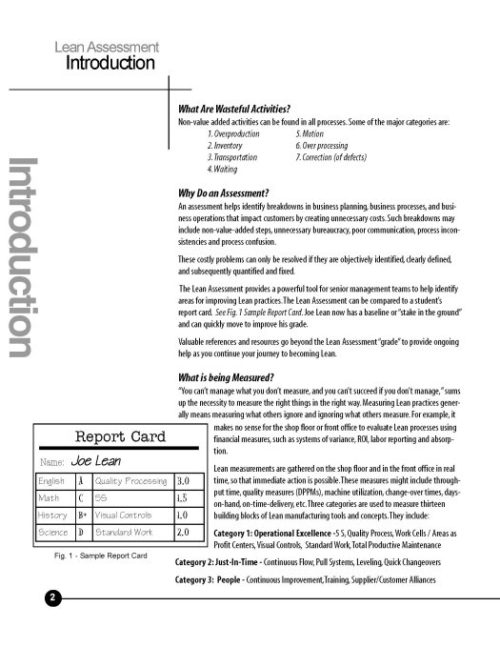
 By: Roger Kremer
By: Roger Kremer
The Lean Assessment was created as a guide to allow the job shop and small manufacturer in their Lean journey. The Lean Assessment will provide a baseline upon which you can improve - and most importantly also provide a reference on what to do. The Lean Assessment has 13 Lean building block categories that are further divided into sub-categories that are scored. The subsequent score will assist you into allocating the appropriate resources in your Lean project. Administrative areas are also referenced in this assessment. The Assessment is self-administering and will allow you to create the necessary visual spider chart to convey the score within the organization. -
Sale!
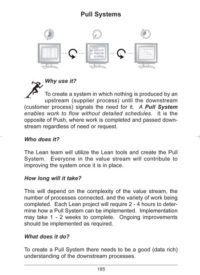
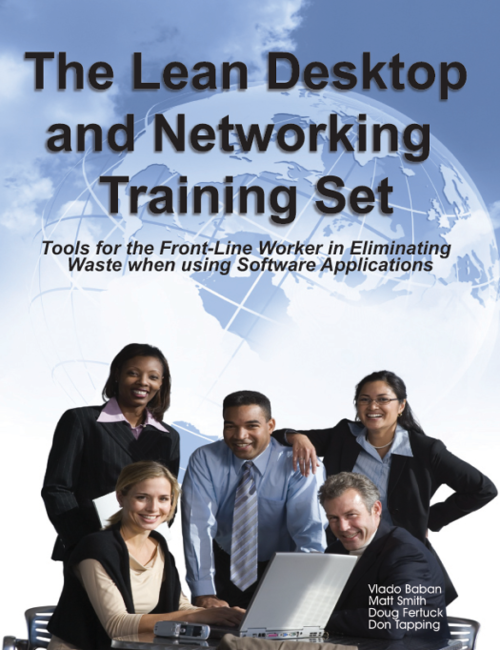 By: Vlado Baban, Doug Fertuck, Matt Smith, Bob Angeli (P.E.), and Don Tapping
By: Vlado Baban, Doug Fertuck, Matt Smith, Bob Angeli (P.E.), and Don Tapping
The Lean Desktop and Networking Pocket Guide XL is designed to be a convenient, quick reference book providing valuable insight into how Lean can be applied to data as it is pulled, analyzed, formatted, and sent through various Desktop and networking applications. The Lean Desktop and Networking Pocket Guide XL details the application of Lean (i.e., the tools and concepts derived from the Toyota Production System), that when leveraged with Microsoft Office and Open Source applications, can assist to better manage data on a daily basis while improving office productivity. Desktop Lean will create a new generation of "power users" and enhance a typical office worker's ability to work individually, as well as collaborate in work group type situations. This "new" power user is a person that readily learns new applications while integrating Lean tools and concepts to eliminate all process waste. -
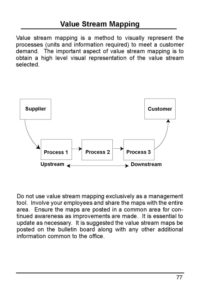
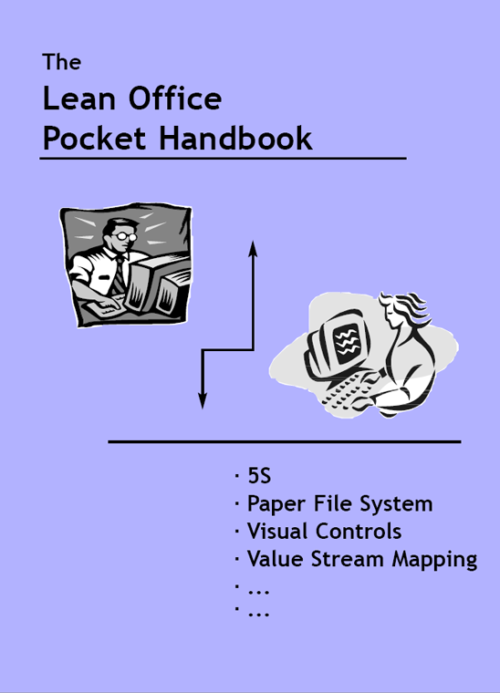 By: Roger Kremer
By: Roger Kremer
The Lean Office Pocket Handbookis a quick-reference guide covering the terms, concepts, benefits and techniques for the application of Lean in administrative areas of all industry types. It is easy to follow, simple in its concepts, and, above all, practical to use. The tools of 5S, continuous flow, office layout, value stream mapping, process mapping, problem solving, kanbanning office supplies, kaizen, plus numerous other Lean tools are defined in terms that relate to the administrative environment. -
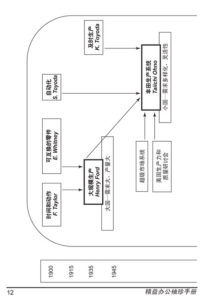
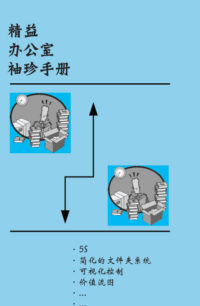 The Lean Office Pocket Handbook (Chinese Edition) is a quick-reference guide covering the terms, concepts, benefits and techniques for the application of Lean in administrative areas of all industry types. It is easy to follow, simple in its concepts, and, above all, practical to use. The tools of 5S, continuous flow, office layout, value stream mapping, process mapping, problem solving, kanbanning office supplies, kaizen, plus numerous other Lean tools are defined in terms that relate to the administrative environment. Paperback - 3.75" x 5.5" - 80 pages
The Lean Office Pocket Handbook (Chinese Edition) is a quick-reference guide covering the terms, concepts, benefits and techniques for the application of Lean in administrative areas of all industry types. It is easy to follow, simple in its concepts, and, above all, practical to use. The tools of 5S, continuous flow, office layout, value stream mapping, process mapping, problem solving, kanbanning office supplies, kaizen, plus numerous other Lean tools are defined in terms that relate to the administrative environment. Paperback - 3.75" x 5.5" - 80 pages -
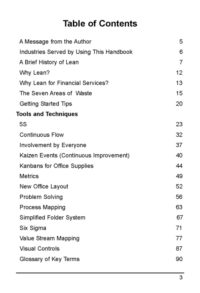
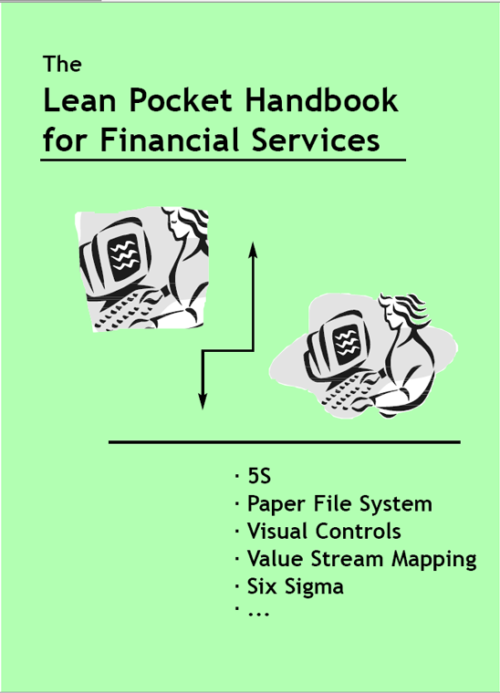 By: David M. TappingThe Lean Pocket Handbook for Financial Services is a quick, ready-to-use, reference allowing employee's in the financial, insurance, and banking industry to learn, understand, and apply Lean (continuous improvement) tools. The book describes the basic thirteen Lean tools (5S, continuous flow, standard work, paper file system, Six Sigma, etc.) that have proven successful in financial service applications. Lean is a business improvement system based on the powerful concepts documented by the world-class Toyota Motor Corporation. Lean is a process to eliminate waste. For these financial service industries to obtain their share of the 21st century investment and banking business, costs must be contained and waste eliminated. If this does not occur through the use of Lean and Six Sigma, your ATM card will be drawing from the Chekiang First Bank Ltd., Beijing, China.
By: David M. TappingThe Lean Pocket Handbook for Financial Services is a quick, ready-to-use, reference allowing employee's in the financial, insurance, and banking industry to learn, understand, and apply Lean (continuous improvement) tools. The book describes the basic thirteen Lean tools (5S, continuous flow, standard work, paper file system, Six Sigma, etc.) that have proven successful in financial service applications. Lean is a business improvement system based on the powerful concepts documented by the world-class Toyota Motor Corporation. Lean is a process to eliminate waste. For these financial service industries to obtain their share of the 21st century investment and banking business, costs must be contained and waste eliminated. If this does not occur through the use of Lean and Six Sigma, your ATM card will be drawing from the Chekiang First Bank Ltd., Beijing, China. -
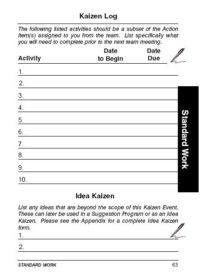
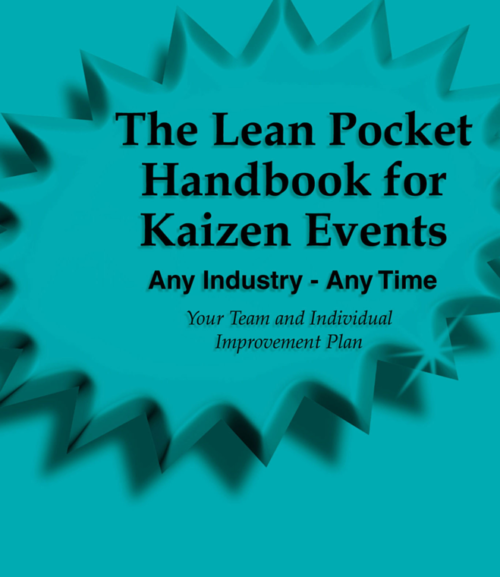 The Lean Pocket Handbook for Kaizen Events is your personal (i.e., individual) Lean planner for the 21st century. We have found individuals that use this pocket handbook feel more part of the Kaizen team. They also continue to contribute improvement ideas well past the formal team Kaizen Event. That is what Lean is all about - making those small, incremental, improvements daily (i.e., hour-by-hour and minute-by-minute) by those closest to the process.This handbook is designed to be:
The Lean Pocket Handbook for Kaizen Events is your personal (i.e., individual) Lean planner for the 21st century. We have found individuals that use this pocket handbook feel more part of the Kaizen team. They also continue to contribute improvement ideas well past the formal team Kaizen Event. That is what Lean is all about - making those small, incremental, improvements daily (i.e., hour-by-hour and minute-by-minute) by those closest to the process.This handbook is designed to be:- A quick-reference guide. Lean tools are explained in more detail in other manuals or by your facilitator during the instruction portion of the workshop.
- Your individual (i.e., personal) log. When working outside the formal training class, notes and ideas about the area or process that are being analyzed can be easily written down in this handbook (serving as your personal log) so as not to lose valuable process information.
- Your personal Kaizen planner. Kaizen Events will require that individual tasks be assigned to team members to be completed prior to the next meeting. Many of these tasks will need to be scheduled within the individual’s current work day. This handbook will thus serve as your “planner” to assure these tasks are adequately planned and completed on time.
- A tool to self-initiate Idea Kaizens. An Idea Kaizen is an individual that implements an improvement with little or no assistance or resource required. This is similar to a Suggestion Program submission; however, the individual with the Idea Kaizen would be responsible for immediate implementation of the idea.
- A learning tool. Each tool will have illustrations to graphically represent the essence of each tool. This will allow you to better understand and learn about each tool prior to using them in your Kaizen Event.
-
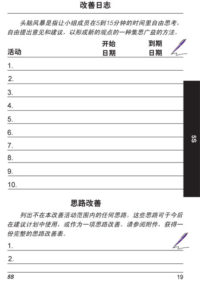
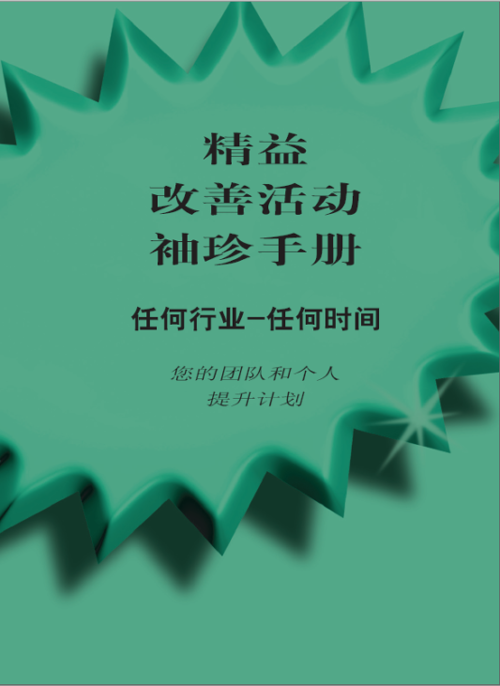 The Lean Pocket Handbook for Kaizen Events (Chinese Edition) is your personal (i.e., individual) Lean planner for the 21st century. We have found individuals that use this pocket handbook feel more part of the Kaizen team. They also continue to contribute improvement ideas well past the formal team Kaizen Event. That is what Lean is all about - making those small, incremental, improvements daily (i.e., hour-by-hour and minute-by-minute) by those closest to the process. Paperback - 3.75" x 5.5" - 96 pages
The Lean Pocket Handbook for Kaizen Events (Chinese Edition) is your personal (i.e., individual) Lean planner for the 21st century. We have found individuals that use this pocket handbook feel more part of the Kaizen team. They also continue to contribute improvement ideas well past the formal team Kaizen Event. That is what Lean is all about - making those small, incremental, improvements daily (i.e., hour-by-hour and minute-by-minute) by those closest to the process. Paperback - 3.75" x 5.5" - 96 pages -
Sale!
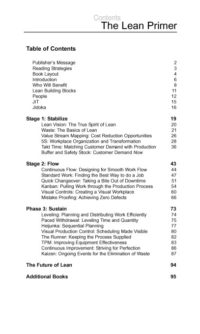
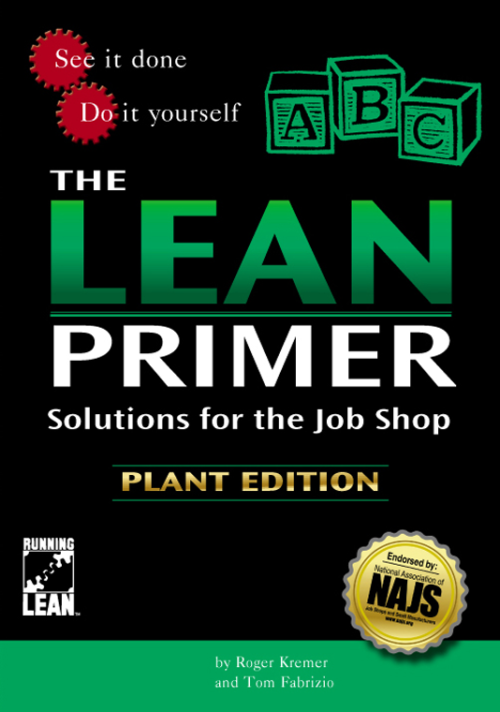 By: Roger Kremer and Tom Fabrizio The Lean Primer will allow you to train the organization to understand how critical the implementation of Lean principles and processes are to your short and long term success. It will provide the various reasons why an organization must go Lean, as well as detailing what Lean is. Lean will be explained in the terms of Stabilize, Flow, and Sustain with reference to the following topics of lean vision, waste, value stream mapping, 5S, takt time, buffer and safety stock, continuous flow, standard work, quick changeover, kanban, visual controls, mistake-proofing, leveling, paced withdrawal, visual production control, runners, TPM, and kaizen. Each of these tools will also be explained with digital photos from world-class shops from across the US that shared their best practices.
By: Roger Kremer and Tom Fabrizio The Lean Primer will allow you to train the organization to understand how critical the implementation of Lean principles and processes are to your short and long term success. It will provide the various reasons why an organization must go Lean, as well as detailing what Lean is. Lean will be explained in the terms of Stabilize, Flow, and Sustain with reference to the following topics of lean vision, waste, value stream mapping, 5S, takt time, buffer and safety stock, continuous flow, standard work, quick changeover, kanban, visual controls, mistake-proofing, leveling, paced withdrawal, visual production control, runners, TPM, and kaizen. Each of these tools will also be explained with digital photos from world-class shops from across the US that shared their best practices. -
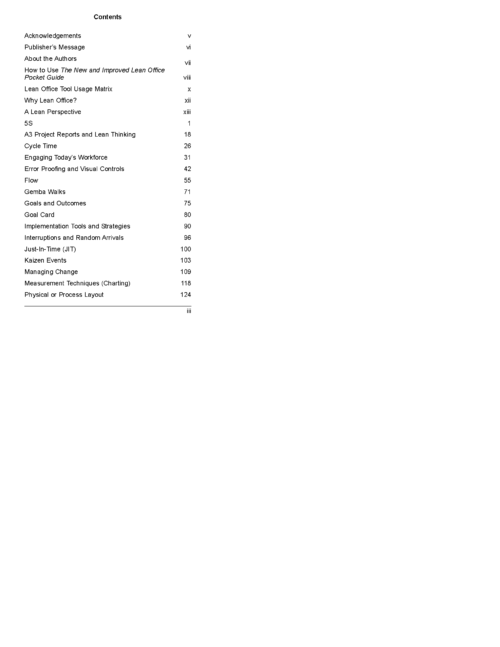
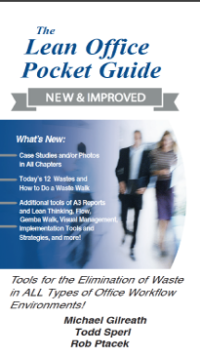 By: Don Tapping
By: Don Tapping
Note: Discontinued! If this product is ordered we will substitute the more comprehensive and up-to-date Practical Lean Six Sigma for Offices (value of $12.95 and is the larger 5" x 8.5" format for easier reading) for the same price for a limited time only. (If quantities over 100 are needed, we can Print-on-Demand, and please email info@theleanstore.com for pricing and availability.)The New and Improved Lean Office Pocket Guide has over 120 illustrations to visually convey the tools and concepts, along with detailed descriptions of all the Lean tools. This newer version of the best selling The Lean Office Pocket Guide also includes: 10 sections that include examples of Lean for electronic files and folders, a Waste Audit, and a Glossary of Lean terms. The tools of 5S, value stream mapping, document tagging, continuous flow, standard work, visual control, takt time, pitch, runners, waste, plus numerous other Lean tools are thoroughly defined as well as guidelines provided for the implementation of each tool. This version has digital photos of Lean office best practices throughout! -
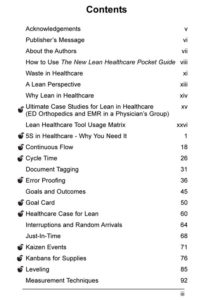
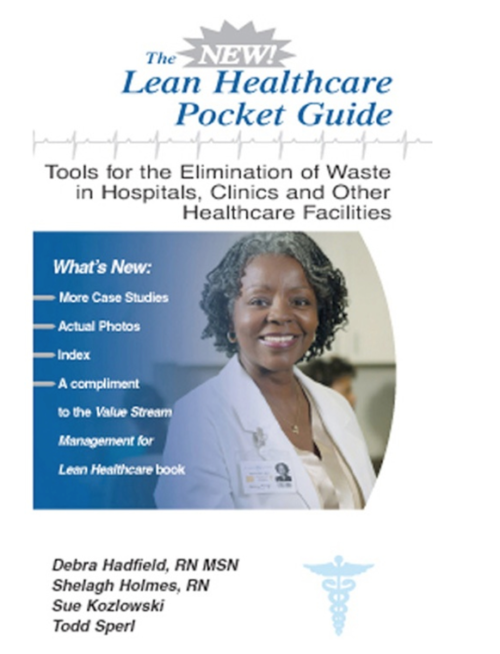 By: Debra Hadfield (RN MSN), Shelagh Holmes (RN), Sue Kozlowski, Todd Sperl, and Don TappingThe New Healthcare Pocket Guide is a collection of input from healthcare professionals and Lean Sensei. It provides easy-to-use and easy-to-understand tools, methods, and concepts based on the world-class Toyota Motor Company (i.e., Lean). The New Lean Healthcare Pocket Guide is design for use as a quick and easy reference as you learn and implement Lean tools. The tools of 5S, continuous flow, cycle time, document tagging, error proofing, goals and outcomes, Just-In-Time, takt time, standard work, pitch, plus all the other Lean tools are thoroughly explained. This “newer” version includes additional case studies, actual photos, an index, as well as compliments the Value Stream Management for Lean Healthcare book. This book will assist any healthcare facility in the enabling them into a Lean environment where the focus is on both driving strategic change and meeting operational goals.
By: Debra Hadfield (RN MSN), Shelagh Holmes (RN), Sue Kozlowski, Todd Sperl, and Don TappingThe New Healthcare Pocket Guide is a collection of input from healthcare professionals and Lean Sensei. It provides easy-to-use and easy-to-understand tools, methods, and concepts based on the world-class Toyota Motor Company (i.e., Lean). The New Lean Healthcare Pocket Guide is design for use as a quick and easy reference as you learn and implement Lean tools. The tools of 5S, continuous flow, cycle time, document tagging, error proofing, goals and outcomes, Just-In-Time, takt time, standard work, pitch, plus all the other Lean tools are thoroughly explained. This “newer” version includes additional case studies, actual photos, an index, as well as compliments the Value Stream Management for Lean Healthcare book. This book will assist any healthcare facility in the enabling them into a Lean environment where the focus is on both driving strategic change and meeting operational goals.

